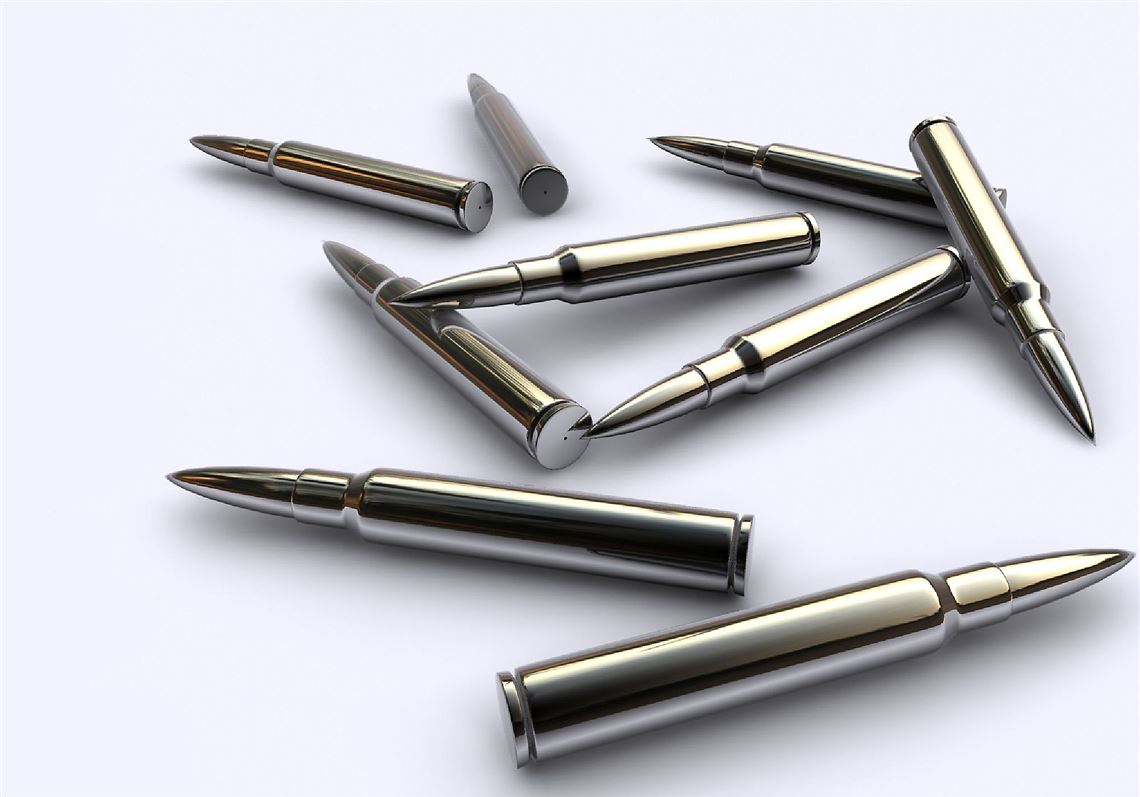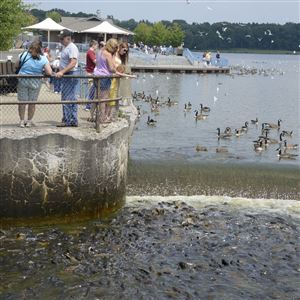It has become routine in presidential politics for outgoing administrations to stick it to the other party on the way out. Executive actions issued in a president’s final days in office can immediately become law with no interagency vetting, public or private sector debate, congressional input, and in most cases, without consequence.
Among the final executive orders and memoranda left by President Barack Obama was a new ban on lead-based ammunition and fishing tackle. Issued during a spike in major national and international news, it received little media coverage. But the directive got the attention of non-profit outdoors organizations.
For years, environmental advocacy groups have lobbied for such a ban. Covering all lands and waters subject to U.S. Fish and Wildlife Service control, the order provides an increased level of lead-poisoning protection for wildlife that might consume lead shot, bullets or sinkers, or eat carrion containing lead.
Fishing organizations complained the action, formalized as Fish and Wildlife Service Director’s Order No. 219, would force changes in traditional angling and add new costs.
Hunting groups and Second Amendment advocates called the lead ban a backdoor gun-control maneuver designed to degrade Americans’ right to bear arms, and justification for eight years of gun and ammo hoarding.
U.S. Fish and Wildlife Service Director Dan Ashe, an Obama appointee, ordered the lead ban Jan. 19, his final full day in office. Ashe said the order was necessary to protect wildlife.
“According to the U.S. Geological Survey, lead poisoning is a toxicosis caused by the absorption of hazardous levels of lead in body tissues,” he said in the order. “Exposure to lead ammunition and fishing tackle has resulted in harmful effects to fish and wildlife species.”
A 1991 Fish and Wildlife Service ban on toxic shot in waterfowl hunting is credited with contributing to improved conditions for many North American waterfowl. The lead shot ban applies to duck and goose hunts on waters, wetlands and land controlled by the federal government, as well as states and private individuals. Some states extend the ban to include all shotgun hunting.
The new lead ban covers all federal lands, including national parks and wildlife refuges, as well as other areas subject to Fish and Wildlife Service oversight. Depending on enforcement details, the ban also could impact hunting on state and privately owned land, as Fish and Wildlife regulations are pervasive and lead-based ammunition is widely used throughout the country.
“The use of lead ammunition continues, … presenting an ongoing risk to upland or terrestrial migratory birds and other species,” the order continues. “Many states have enacted nontoxic shot and ammunition requirements to address this concern.”
Gun rights advocates have expressed outrage at the administration’s last-minute move, labeling it political.
In an interview with the Associated Press, National Shooting Sports Foundation senior vice president Lawrence Keane said the order was not based on fact.
“This directive is irresponsible and driven not out of sound science but unchecked politics. The timing alone is suspect,” said Keane. “This directive was published without dialogue with industry, sportsmen and conservationists. The next director should immediately rescind this and instead create policy based upon scientific evidence of population impacts with regard to the use of traditional ammunition.”
In a news release, the National Rifle Association took figurative aim at the Obama administration for ordering the lead ban. “It will hopefully amount to little more than a symbolic act of defiance by a president with little of substance to show for his eight years in office.”
In a statement, Gene Gilliland, national conservation director of B.A.S.S., said the fishing organization and its partners at state fisheries management agencies called for the directive’s prompt reversal.
“This 11th hour order, just hours before the new administration was to take office, was an obvious attempt to push through ... part of the previous administration’s environmental agenda,” he said, “without full consultation among all the stakeholders.”
Order No. 219 also links lead fishing gear with widespread poisoning in birds. On waterways including major rivers, coastal waters and the Great Lakes, where Fish and Wildlife Service programs abound, the use of lead sinkers is routine.
“Ingestion of lead fishing sinkers and other fishing tackle have been documented in waterbirds,” the order reads. “Six states currently restrict the use of lead fishing tackle under certain circumstances to protect wildlife health.”
In an American Sportfishing Association statement, vice president of government affairs Scott Gudes said, “the sportfishing industry views this unilateral policy to ban lead fishing tackle, which was developed without any input from the industry, other angling organizations and state fish and wildlife agencies, as a complete disregard for the economic and social impact it will have on anglers and the recreational fishing industry.”
The Association of Fish and Wildlife Agencies, representing state and provincial wildlife management agencies including the Pennsylvania Game and Fish and Boat commissions, expressed “utter dismay” over the directive.
“This action flies squarely in the face of a long and constructive tradition of states working in partnership with the Service to effectively manage fish and wildlife resources,” said association president Nick Wiley, in a statement. “The association views this order as a breach of trust and deeply disappointing given that it was a complete surprise and there was no current dialogue or input from fish and wildlife agencies prior to issuance.”
In some circles, Order No. 219 is suspected of being an act of partisan positioning, if not presidential legacy building. In 2014, President Obama signed into law a provision that prohibited the use of federal funds in regulating lead fishing tackle and ammunition. More than 100 environmental groups joined in a lawsuit attempting to force the federal Environmental Protection Agency to regulate spent lead bullets and shot under the Toxic Substances Control Act. The EPA rejected the petition, arguing that it didn’t have the authority to regulate gun cartridges and shells. A federal appeals court confirmed a lower court’s ruling in favor of the EPA.
Even the order’s wording sends conflicting messages. It goes into effect immediately, it states, but gives Fish and Wildlife until January 2022 to enforce the ban. A caveat permits alternate interpretations of the order “as needed for law enforcement or health and safety concerns, as provided for in policy.”
“It remains in effect until we incorporate it into the Fish and Wildlife Service Manual, or until we amend, supersede or revoke it, whichever comes first,” said Ashe in the order. “If we do not amend, supersede or revoke it, the provisions of this order will terminate on July 31, 2018.”
Order No. 219 might be moot long before that. The day after it was issued a White House memorandum instructed departments and agencies to put a “freeze” on all new regulations, pending review.
If the order stands, reversing it would force the incoming administration and congressional Republicans to explain to voters why they’re increasing the amount of lead being eaten by wildlife. Hunters, anglers and environmentalists can decide whether bullets and sinkers are a serious threat, or the ammunition used in a president’s parting shot.
The Associated Press contributed to this report.
First Published: January 29, 2017, 5:00 a.m.



















